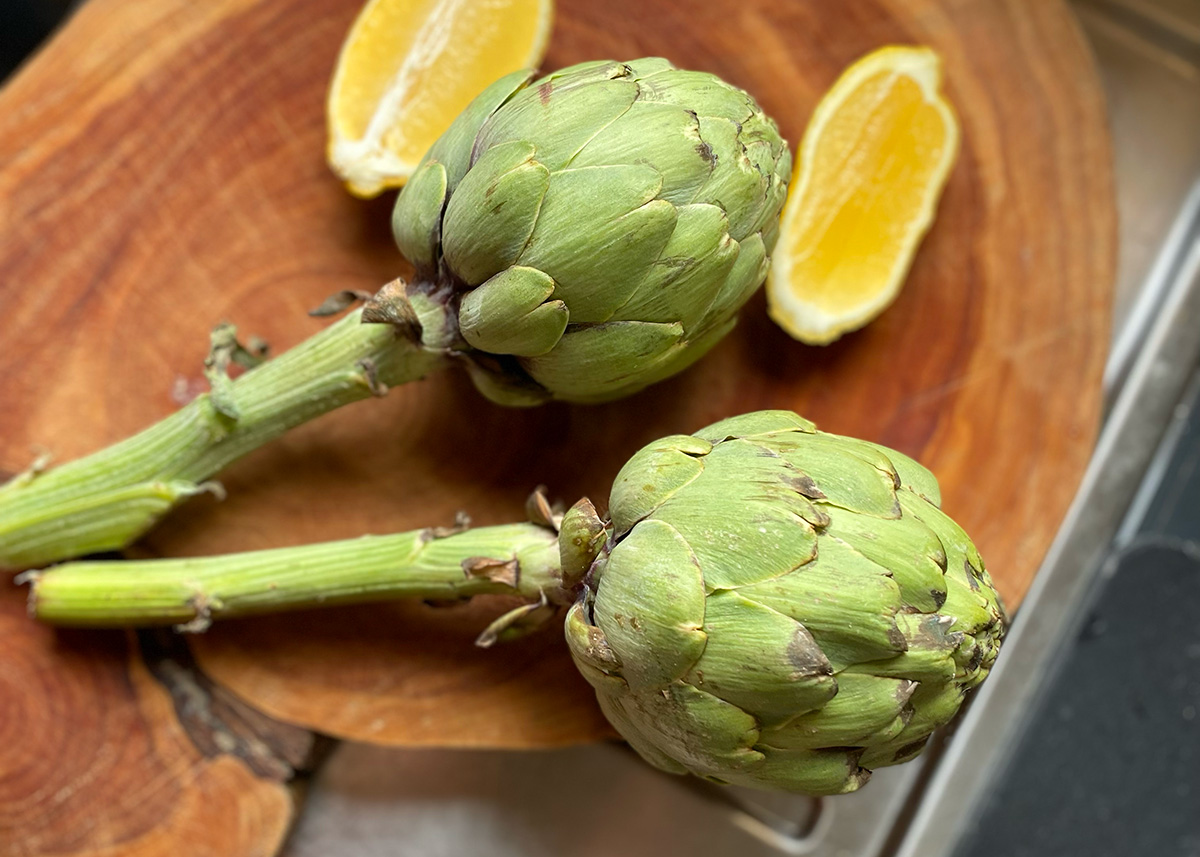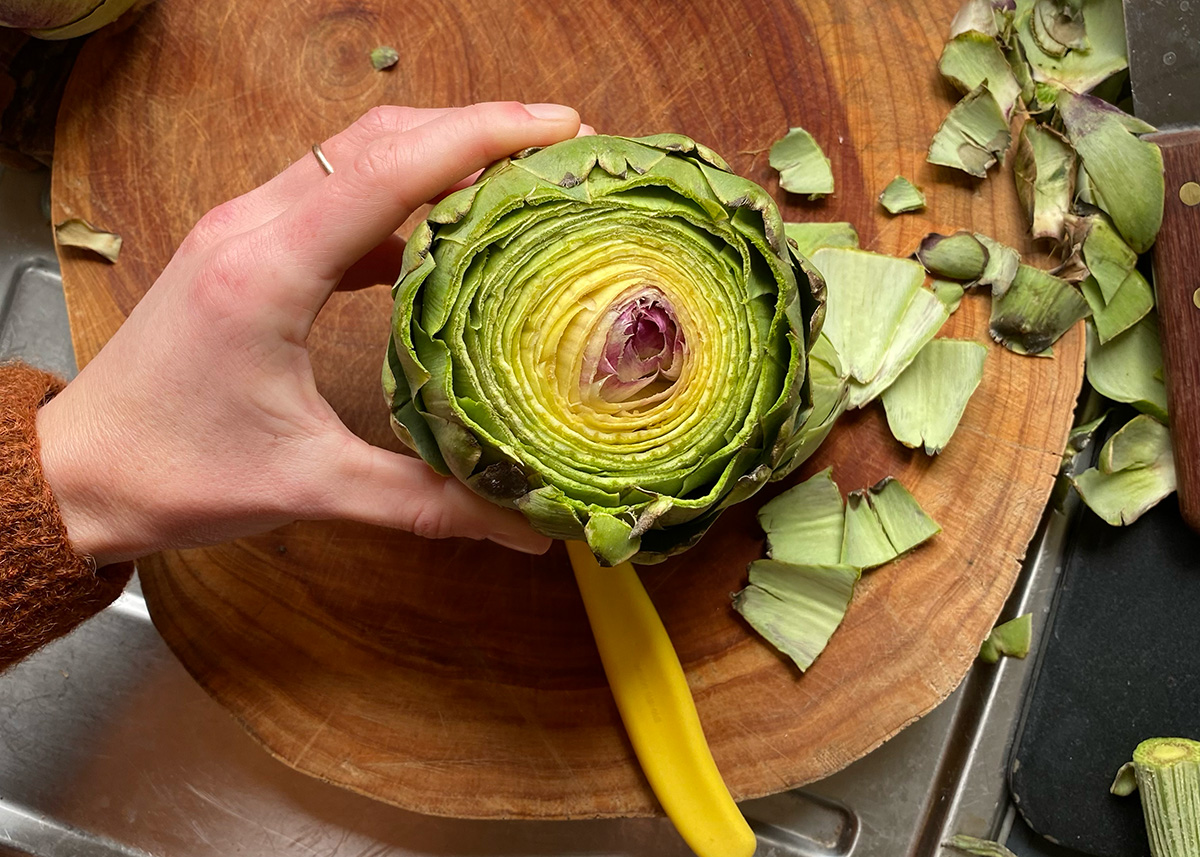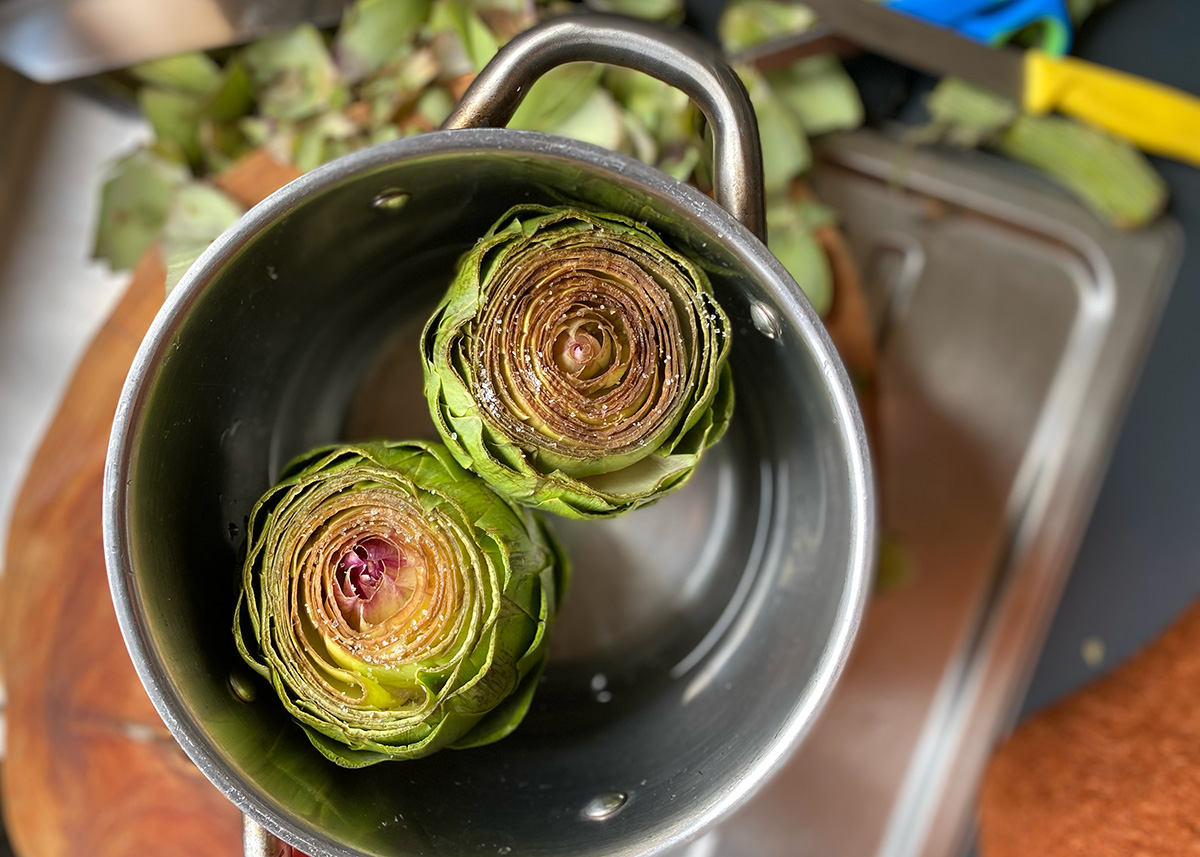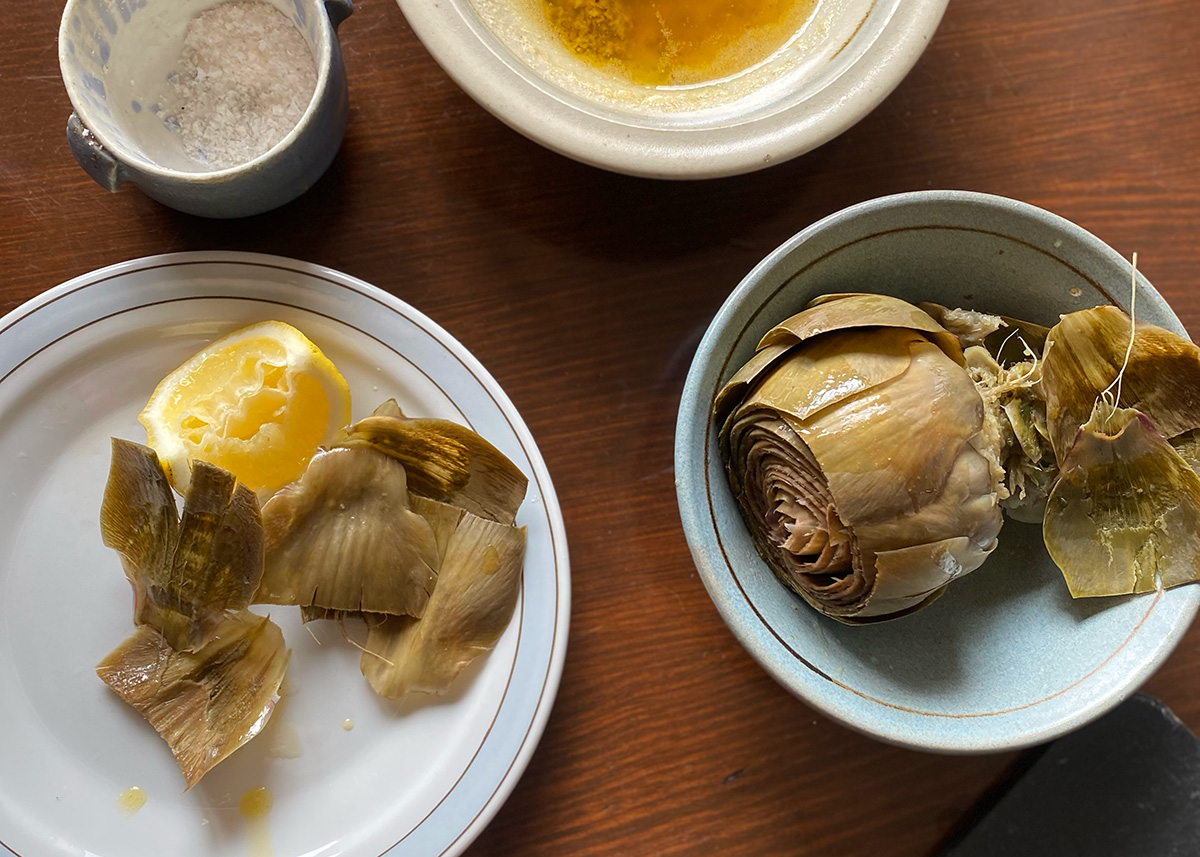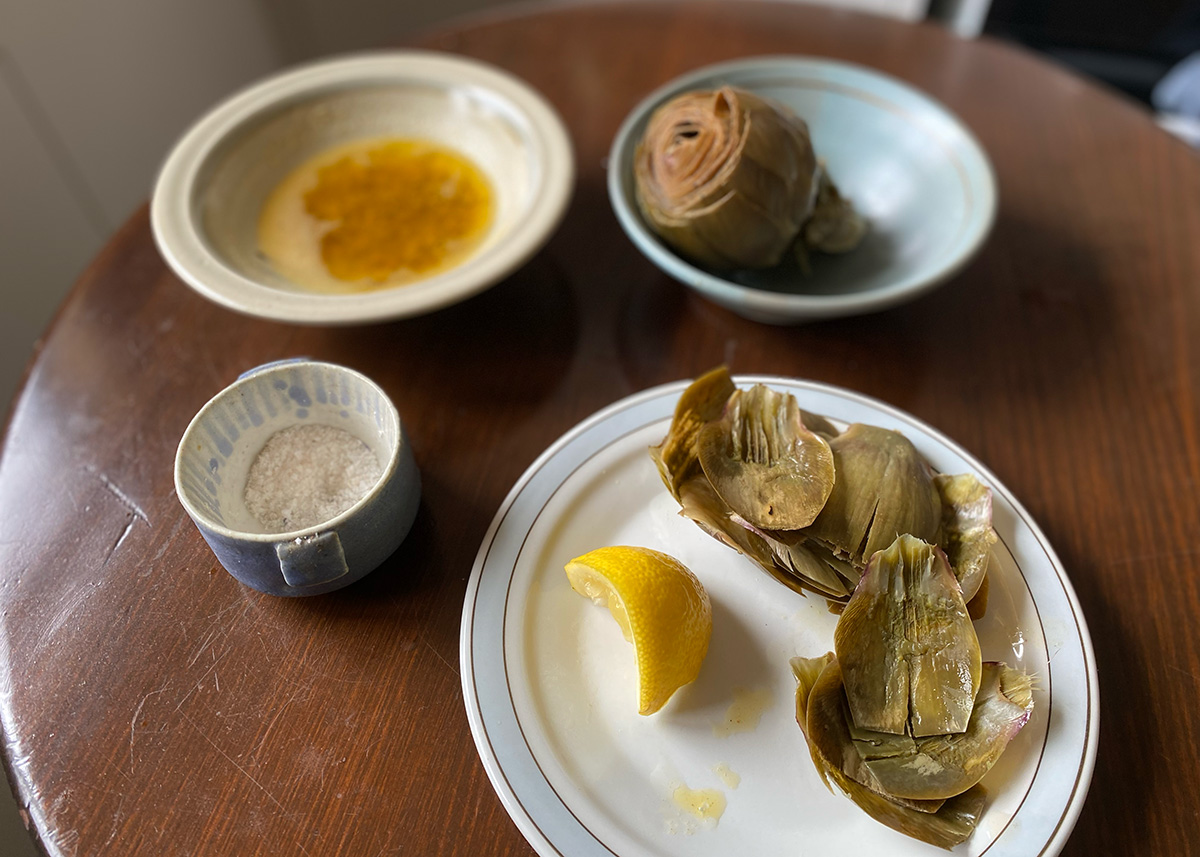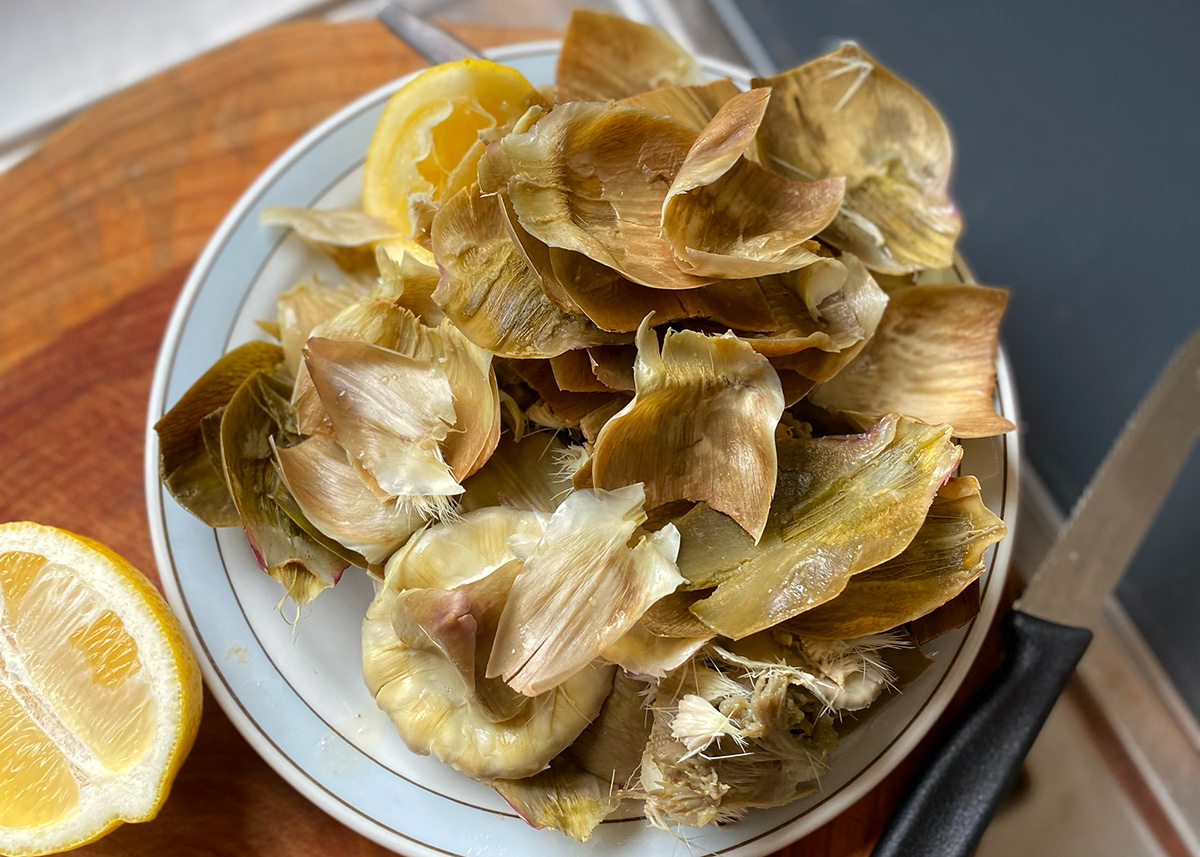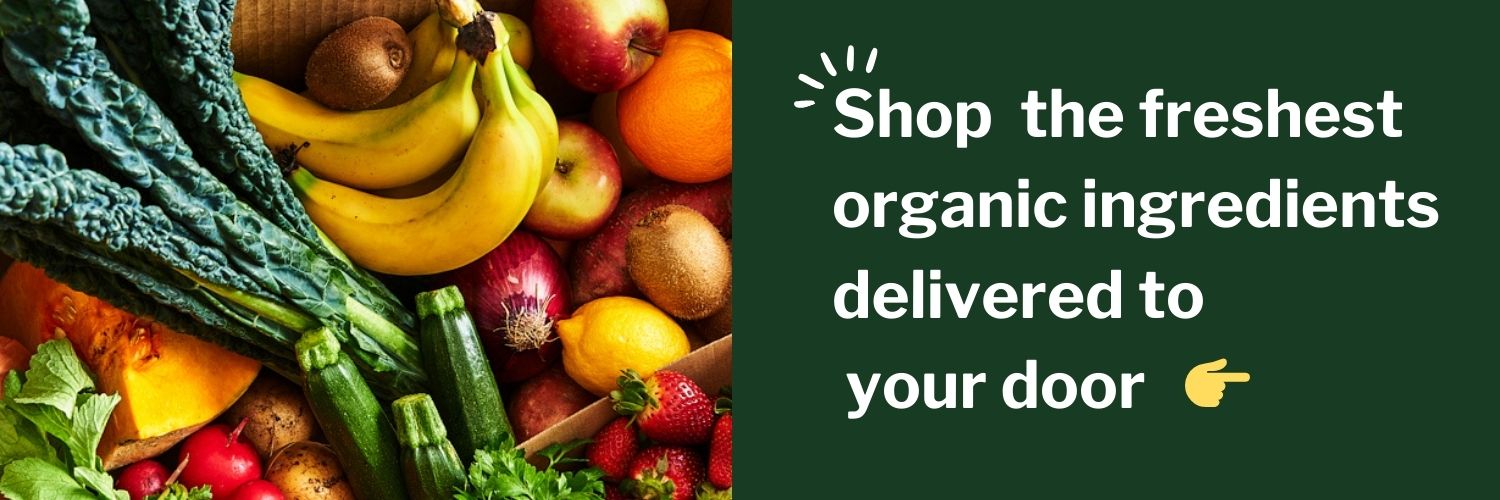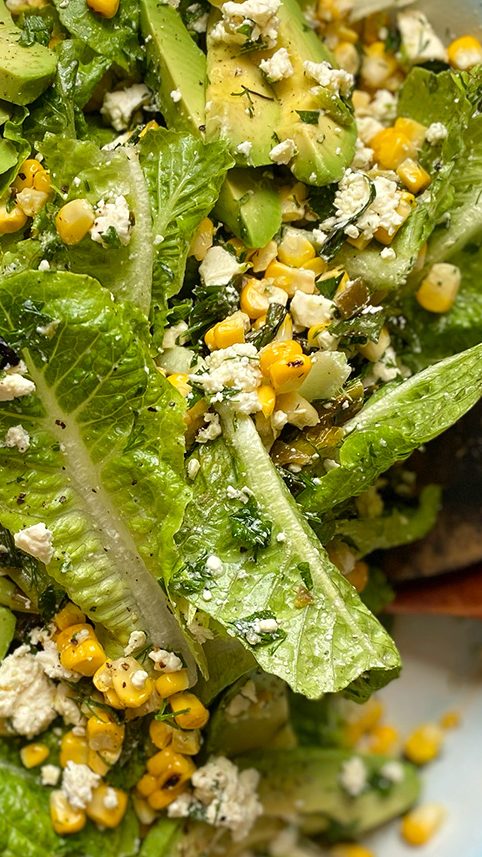Ingredients
2 large globe artichokes
Salt
60g unsalted butter
1 garlic clove, finely grated
2-4 anchovy fillets
Freshly ground black pepper
1 lemon, halved for squeezing over
Flaky salt
View this post on Instagram
Summary
Plucking a steamed globe artichoke leaf, dunking it in butter and scraping the tender flesh with your teeth is very chic AND delicious. We think of it as the crayfish of the vegetable world – a special treat that takes a bit of work, makes a mess and is enhanced with butter! This recipe helps you tackle the thorny, confounding spring vegetable.
Steamed Globe Artichokes
Using a sharp knife, trim the artichoke stems, leaving as little as 2 cm or as much as 5 cm (depends if they’ll fit in your pot or not). With the artichoke laying on a cutting board, use a sharp knife to slice off the upper 1/3 off the top, exposing the rose-like interior. Finally, use kitchen scissors to snip off the pointy end on each remaining leaf. Prise open the inner leaves of each artichoke slightly, and season with salt.
Bring about 5 cm of water to a simmer in a suitable sized pot for which you have a lid. Place artichokes inside upright (stem on the bottom), reduce heat to low, cover and steam until leaves pull out easily and hearts are tender (you can use tongs to try and pull a leaf so you don’t burn your hands), 60 ish minutes.
When you’re about 10 mins away from being ready, melt the butter in a small pot over medium heat. Once the butter is melted, add garlic and anchovies, swirling to combine. Remove from heat and stir until anchovies are totally melted; season with salt and pepper.
Squeeze a bit of lemon over each steamed artichoke, sprinkle with flaky salt and serve alongside warm anchovy-garlic butter.
To eat:
To understand the eating of an artichoke, knowing the anatomy is helpful. The leaves (partially edible) surround a choke (inedible) which rests on top of the heart (very edible) which is connected to the stem (the inner of which is edible).
To eat the artichoke, pluck each leaf at a time, dipping generously into the butter, letting it pool into the naturally occurring cup shape at the bottom of the leaf. Using your teeth (bottom or top), scrape the meat from the bottom half.
The further and further you go into the centre of the artichoke, the leaves change from sturdy and fibrous to thin and delicate. There is a sweet spot for the leaves, after the darkest green ones and before the palest, featheriest ones where they are tender enough to eat whole, if you’re game (mild choking risk).
Eventually, you’ll begin to see the choke reveal itself, the ombre of green to white to lavender to plum colour.
Once you get to the purple-ish leaves that are so thin they’re almost transparent with pointy tips, discard them. They are too dangerous, too choke-adjacent to enjoy. Peel them off in one layer, revealing…The Choke. It looks like millions of small, tiny feathers or fibres.
Using a spoon or fork, gently scrape the choke away from the heart. The heart looks almost like the black part of a sunflower, where the seeds are. This checks out, as they are related to the same family, along with other thistles.
Cut the heart into quarters and, knowing it’s the best part of the artichoke, dip each one into the butter, then eat it. you can also eat the stem, as it’s a flavourful and similarly-textured continuation of the heart, though the outer skin may be a bit fibrous.
This recipe is by Alison Roman
